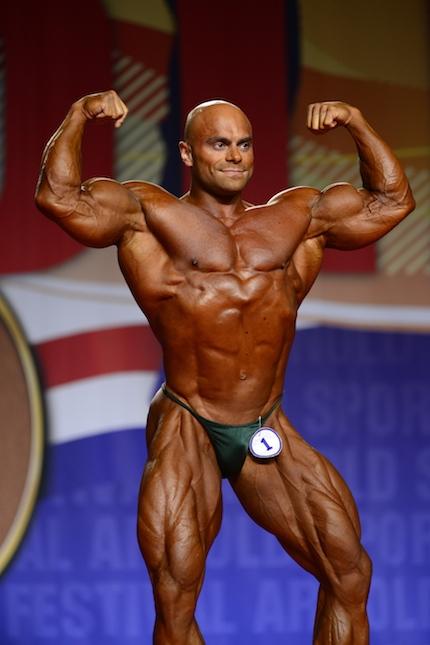The Romano Factor


Then and Now
My wife and I just returned to Mexico from Charlotte, North Carolina, where she competed in the NPC Mid-Atlantic Classic (she took the overall in women’s physique!). It had probably been five years since I attended a regional show the size and stature of this one. And, by comparison, the difference today is astounding.
First of all, the show was run like the factory where they make Swiss watches. A record (for this show) 310 competitors were corralled, organized, deployed onstage, and returned flawlessly while the emcee kept the power running. All the competitors were well treated, they had tons of room backstage, and the venue was big, clean, and modern. This could easily have been the setting for an IFBB pro show, not an amateur regional competition. Props to the promoters; if their goal was to elevate the level of bodybuilding in the Carolinas, then they hit this out of the park.
Indeed, the nuts and bolts of this show were every bit worthy of the factory in which they were being put together; however, it was the sheer number of competitors that struck me—the sheer number of competitors filling up a rather hefty roster of divisions: men’s bodybuilding; women’s bodybuilding, fitness, figure, and physique; and men’s and women’s bikini, in all age groups from novice, to open, to masters.
The competitive variety is now so diverse that the term “bodybuilding contest” is a name synonymous with an enormous event encompassing just about any physique athlete/artist who cares to showcase his or her particular rendering of the human form. In my antiquated vernacular, today a “bodybuilding contest” is to such a variety of muscle events as the term “Kleenex” is the ubiquitous term for facial tissue, regardless of what brand it actually is.
But it wasn’t always like this. Back in the day, a bodybuilding contest meant that you were going to see male bodybuilders posing onstage. That’s it. No other events and no women. Before the advent of fitness, figure, bikini, and physique, women’s bodybuilding was a standalone event. When Cory Everson was Ms. Olympia, the contest was held by itself and sold out Madison Square Garden’s Felt Forum in New York City. Today, after spending several years relegated to an expo sideshow, the Ms. Olympia seems to be gasping its last breaths. It has been cancelled for 2015 … but that’s another story.
Back when a bodybuilding contest meant only male bodybuilders, a promoter of such an event made about as much money as Mother Teresa, and she’s dead. Since one would likely have to travel to Detroit to find a less favorable economic outlook than what rewards were to be had putting on a bodybuilding show, the prospect of adding shows to a very stark calendar seemed bleak. So, the federation had to make some changes. The first thing they did was join men’s and women’s bodybuilding into one show. This multiplied the pot for the promoter, but not enough. Then women’s fitness was born. Now promoters had three events on one ticket, and they started making money. Next came figure, bikini, men’s 202 (which later became 212), “men’s bikini,” and women’s physique.
The sheer variety of competition now enables a regional show to attract over 300 competitors. That’s not only their entry fee times 300, but also the friends and families of those 300 competitors who are buying tickets to pre-judging and the finals. Then there’s the sponsors who pay to have their booths in the midst of such a crowd … such a show couldn’t have existed 25 years ago, let alone made any money.
Thankfully, it’s a much different landscape today. The scope of “bodybuilding” has expanded to include divisions for a wide variety of practitioners of one form or another of the iron game. More people can compete these days, which means more promoters can turn a profit, which means more promoters will be enticed into putting on more shows in more and more places. This isn’t typically what we’re referring to when we speak of “growth” in bodybuilding, but in this case, I’ve probably witnessed one of the greatest fiscal turnarounds in modern US history.

